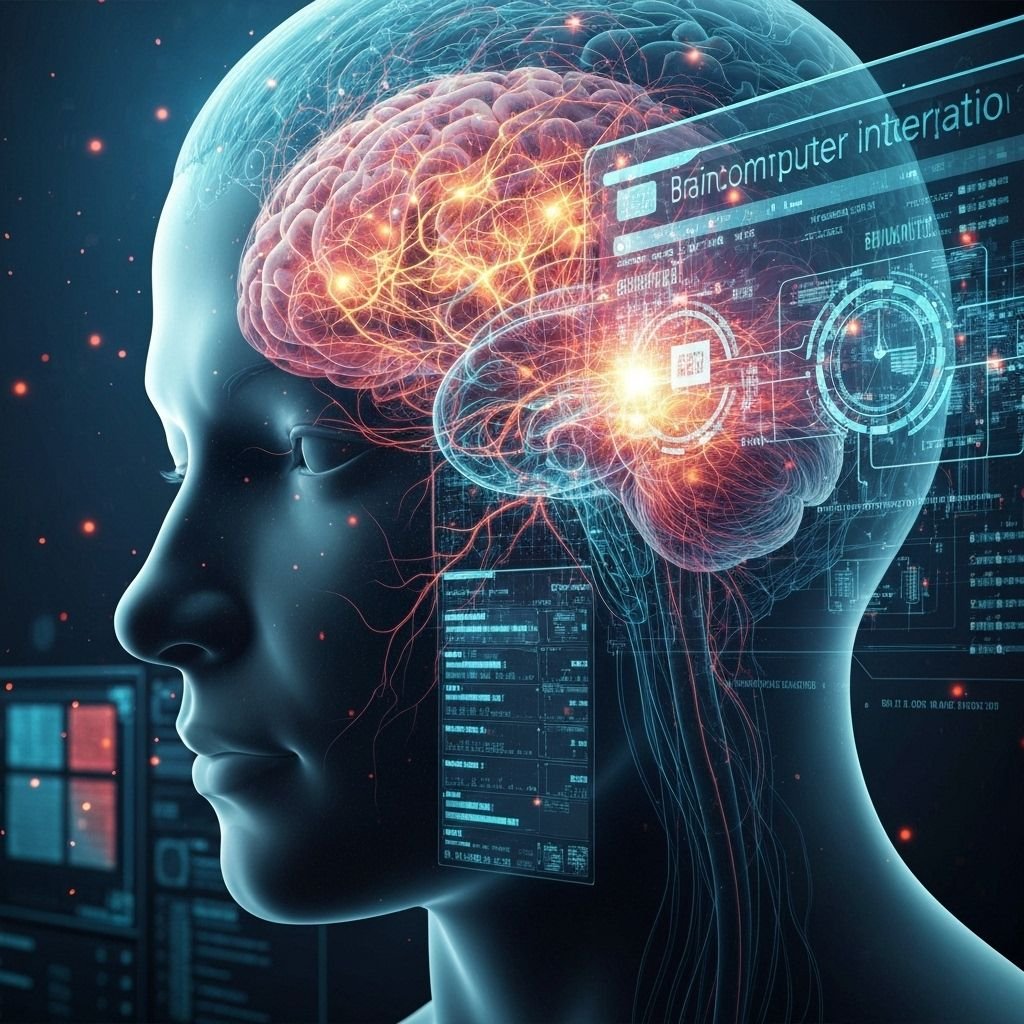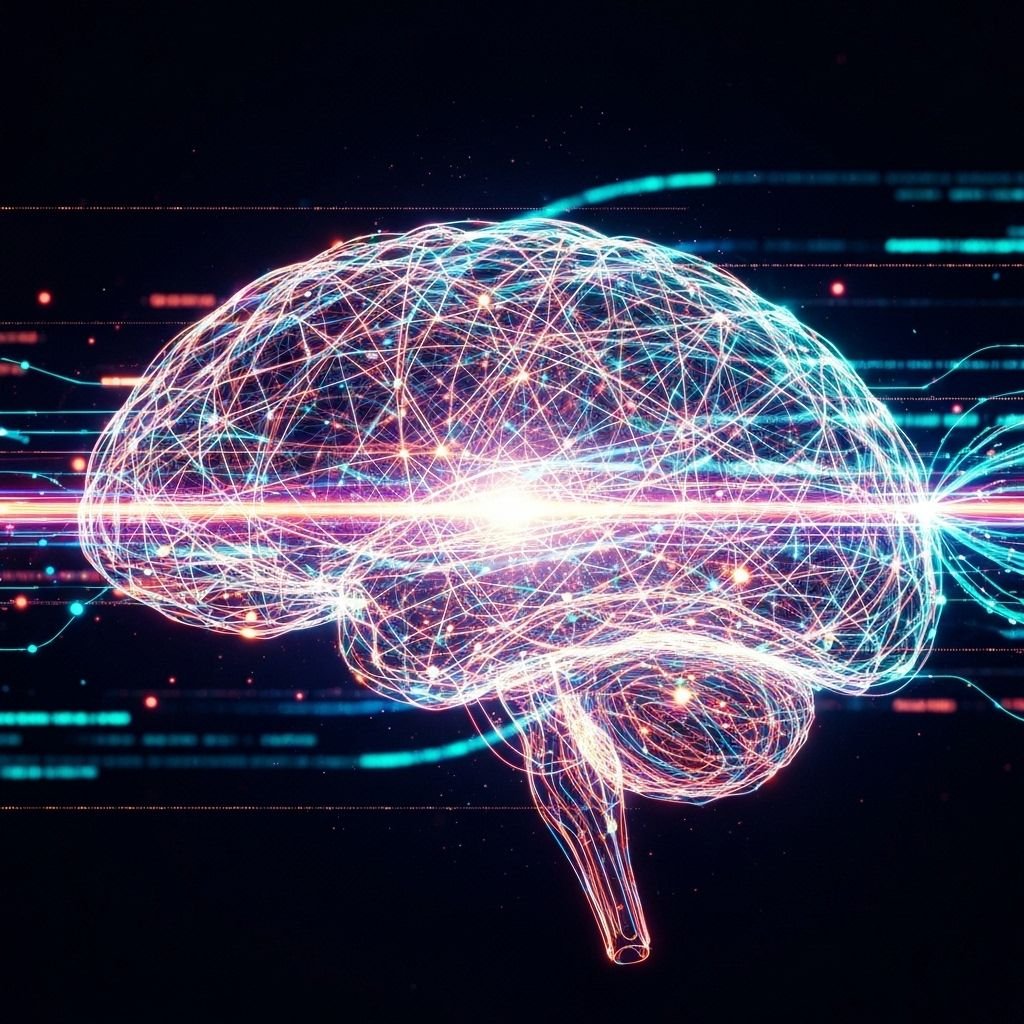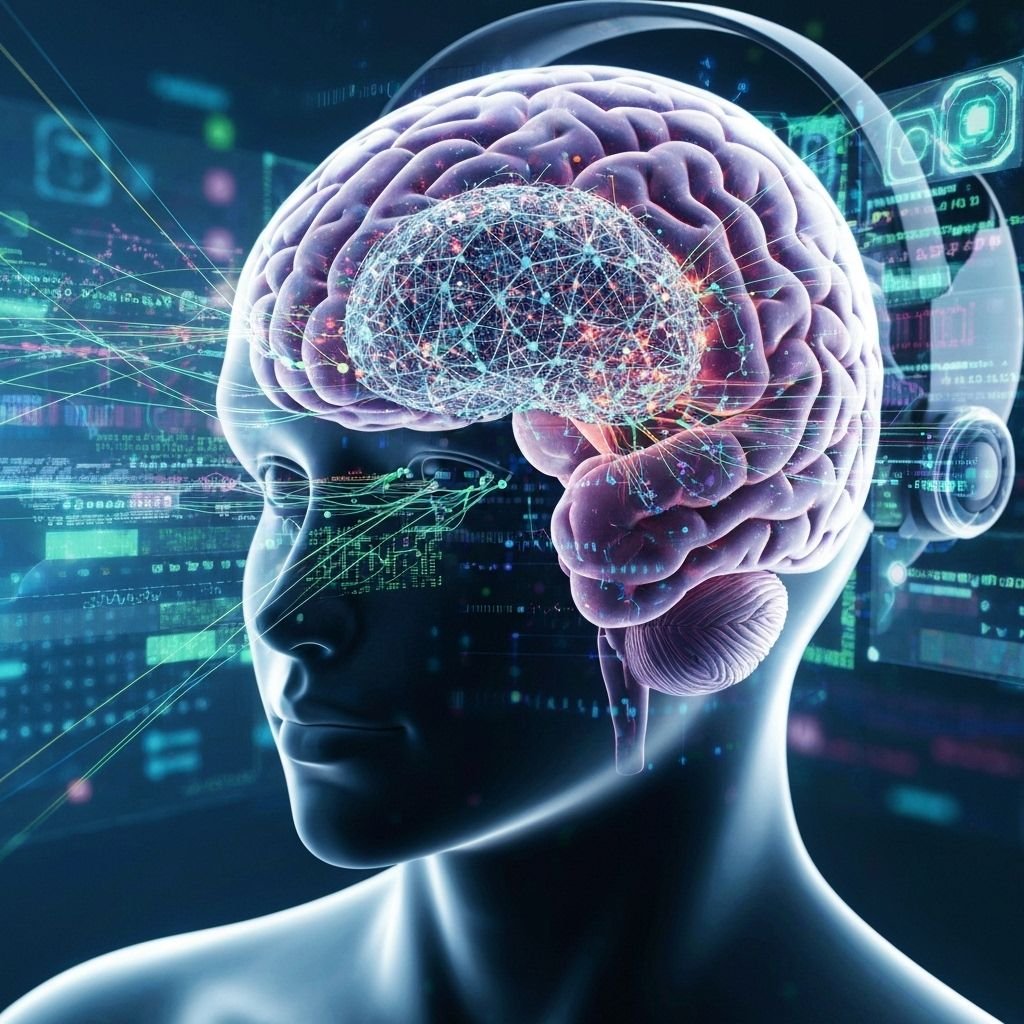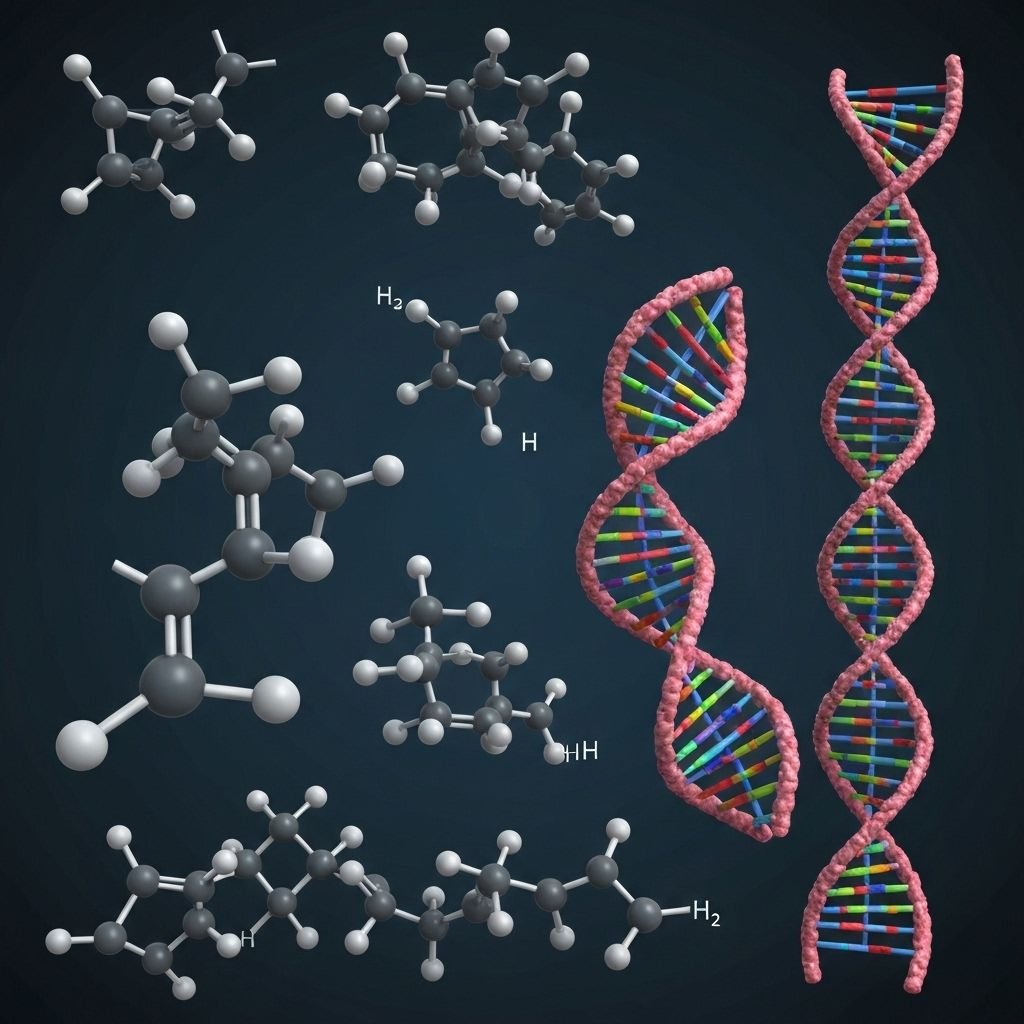Neuralink has achieved a groundbreaking milestone in brain-computer interface technology, successfully enabling paralyzed patients to control artificial intelligence assistants and smart devices through direct neural signals. The revolutionary clinical trial demonstrates that patients with severe spinal cord injuries can interact with AI systems using only their thoughts, opening unprecedented possibilities for medical treatment and human-AI collaboration.
Revolutionary Brain-Computer Interface Technology
The Neuralink implant, known as the "N1 Chip," represents the most advanced brain-computer interface ever developed. This ultra-thin, wireless device contains over 1,000 electrodes that can detect and decode neural signals with extraordinary precision, translating brain activity into digital commands that AI systems can understand and execute.
Dr. Sarah Mitchell, lead neuroscientist on the trial, explains: "We're witnessing the dawn of true brain-AI symbiosis. Patients can now think a command, and AI assistants respond instantly, creating a seamless connection between human intention and artificial intelligence execution."
Clinical Trial Results and Patient Outcomes
The initial clinical trial involved 15 patients with complete spinal cord injuries who had lost all motor function below the injury site. All participants successfully learned to control AI systems through the Neuralink interface within the first week of implantation, demonstrating remarkable adaptability and effectiveness.
Trial achievements include:
- 100% success rate in basic AI command execution
- 95% accuracy in complex multi-step AI interactions
- Average response time of 150 milliseconds from thought to action
- Sustained performance improvement over 6-month period
- Zero serious adverse effects or complications
- Significant improvement in patient quality of life measures
Direct Neural Control of AI Assistants
Patients can now control sophisticated AI assistants through direct thought, enabling them to perform complex tasks that were previously impossible due to their physical limitations. The AI systems learn and adapt to each patient's unique neural patterns, creating personalized interaction methods.
AI control capabilities encompass:
- Voice synthesis allowing patients to "speak" through AI
- Email composition and communication management
- Web browsing and information research
- Smart home device control and automation
- Entertainment system operation and content selection
- Calendar management and appointment scheduling
- Social media interaction and content creation
Smart Device Integration and Home Automation
The brain-computer interface seamlessly integrates with existing smart home technology, allowing patients to control lights, temperature, security systems, and appliances through direct neural commands. This integration transforms living spaces into responsive environments that anticipate and fulfill patient needs.
Smart home capabilities include:
- Lighting control with customizable brightness and color settings
- Temperature regulation and HVAC system management
- Security system arming, disarming, and monitoring
- Entertainment center operation and media selection
- Kitchen appliance control for meal preparation assistance
- Door lock control and visitor access management
- Emergency alert systems and caregiver notification
Advanced Neural Signal Processing
The Neuralink system employs cutting-edge machine learning algorithms to decode complex neural patterns and distinguish between different types of intended actions. The AI learns each patient's unique brain signals, continuously improving accuracy and expanding the range of controllable functions.
Signal processing features include:
- Real-time neural pattern recognition and classification
- Adaptive learning algorithms that improve with use
- Multi-modal signal interpretation for complex commands
- Noise filtering and artifact removal systems
- Predictive modeling for anticipated user intentions
- Personalized calibration for optimal performance
Restoration of Communication Abilities
One of the most profound impacts of the technology is the restoration of natural communication for patients who lost the ability to speak due to their injuries. The AI voice synthesis system can generate speech that matches the patient's pre-injury voice characteristics, enabling natural conversations with family and friends.
Communication restoration includes:
- Natural language generation from neural thought patterns
- Voice synthesis matching patient's original speech patterns
- Real-time conversation participation without delays
- Emotional expression and tonal variation in speech
- Multiple language support and translation capabilities
- Text-to-speech and speech-to-text integration
Rehabilitation and Therapy Applications
The brain-computer interface serves as a powerful tool for neurological rehabilitation, helping patients maintain and strengthen neural pathways while developing new ones. The system provides feedback that encourages brain plasticity and motor learning, even in the absence of physical movement.
Rehabilitation benefits encompass:
- Motor cortex stimulation and neural pathway maintenance
- Cognitive rehabilitation through mental exercises
- Virtual reality therapy and movement simulation
- Biofeedback training for improved neural control
- Progressive difficulty adjustment in therapy programs
- Measurable progress tracking and assessment tools
Independence and Quality of Life Improvements
The technology dramatically enhances patient independence, allowing them to perform daily tasks, pursue education and career goals, and maintain social connections without requiring constant assistance from caregivers. This independence translates to significant improvements in mental health and overall quality of life.
Independence improvements include:
- Reduced dependence on caregivers for daily tasks
- Ability to work remotely using AI-assisted interfaces
- Educational pursuits through neural-controlled devices
- Social interaction and relationship maintenance
- Creative expression through AI-assisted art and writing
- Entertainment and leisure activity participation
Safety and Biocompatibility Measures
Extensive safety testing and biocompatibility studies ensure the long-term viability of the implants. The materials and design minimize immune responses and tissue damage, while sophisticated monitoring systems continuously assess device function and patient health.
Safety features include:
- Biocompatible materials that integrate safely with brain tissue
- Continuous health monitoring and early warning systems
- Wireless power and data transmission to eliminate infection risks
- Robust encryption for secure neural data protection
- Emergency shutdown and failsafe mechanisms
- Long-term stability testing and performance monitoring
Ethical Considerations and Privacy Protection
The development of brain-computer interfaces raises important ethical questions about neural privacy, consent, and the implications of direct brain-AI interaction. Neuralink has implemented comprehensive ethical frameworks and privacy protection measures to address these concerns.
Ethical safeguards encompass:
- Informed consent protocols for implant recipients
- Neural data encryption and privacy protection
- Patient autonomy preservation and decision-making rights
- Transparent research practices and data sharing policies
- Independent ethics board oversight and review
- Right to disconnect and device removal options
Future Applications and Expansion Plans
Neuralink plans to expand the technology to treat a broader range of neurological conditions, including depression, anxiety, addiction, and neurodegenerative diseases. Future developments will enhance the interface capabilities and extend the range of controllable AI systems and devices.
Future development areas include:
- Treatment of depression and mental health conditions
- Memory enhancement and cognitive augmentation
- Sensory restoration for vision and hearing impairments
- Enhanced brain-to-brain communication capabilities
- Integration with advanced robotic systems
- Expanded AI learning and adaptation capabilities
Global Impact and Accessibility
The success of the clinical trials has prompted plans for global expansion and increased accessibility of the technology. Partnerships with healthcare systems worldwide aim to make brain-computer interfaces available to patients regardless of geographic location or economic status.
Global expansion initiatives include:
- International clinical trial expansion to multiple countries
- Healthcare system partnerships for broader access
- Cost reduction strategies for global affordability
- Training programs for medical professionals worldwide
- Regulatory approval processes in multiple jurisdictions
- Support for developing countries and underserved populations
Technological Integration and Compatibility
The Neuralink interface is designed to be compatible with existing technology ecosystems, working seamlessly with smartphones, computers, smart home devices, and emerging AI platforms. This compatibility ensures that patients can access the full range of digital tools and services.
Integration capabilities encompass:
- Cross-platform compatibility with major operating systems
- API development for third-party application integration
- Cloud-based AI service connectivity
- IoT device ecosystem compatibility
- Virtual and augmented reality integration
- Advanced gaming and entertainment platform support
Research and Development Continuation
Ongoing research focuses on improving the technology's capabilities, expanding its applications, and enhancing patient outcomes. Collaboration with academic institutions and research organizations drives continuous innovation in brain-computer interface development.
Research priorities include:
- Enhanced neural signal processing and interpretation
- Bidirectional communication for sensory feedback
- Improved battery life and wireless charging systems
- Miniaturization and less invasive implantation procedures
- Advanced AI learning algorithms for better adaptation
- Long-term biocompatibility and durability studies
Conclusion
Neuralink's breakthrough in enabling paralyzed patients to control AI systems through direct neural interface represents a transformative moment in both neuroscience and artificial intelligence. This technology not only restores capabilities lost to injury or disease but creates entirely new possibilities for human-AI interaction and collaboration.
The successful clinical trials demonstrate that the seamless integration of human consciousness with artificial intelligence is not science fiction but scientific reality. As this technology continues to evolve and expand, it promises to revolutionize treatment for neurological conditions and redefine the boundaries between human and artificial intelligence.
The profound impact on patient quality of life, independence, and dignity showcases the transformative potential of brain-computer interface technology. As Neuralink and similar technologies advance, they offer hope to millions of people worldwide who suffer from paralysis, neurological conditions, and other disabilities, promising a future where the limitations of the human body need not limit the capabilities of the human mind.




